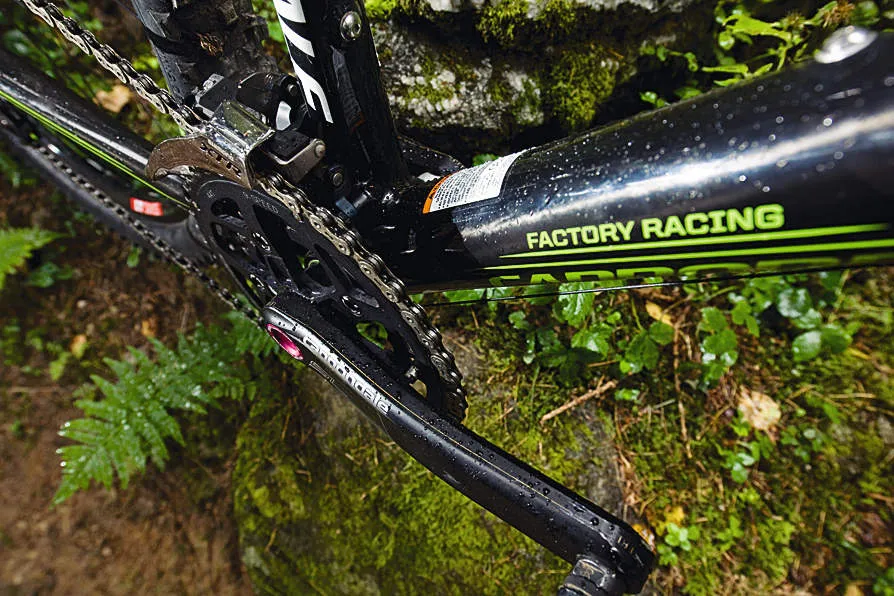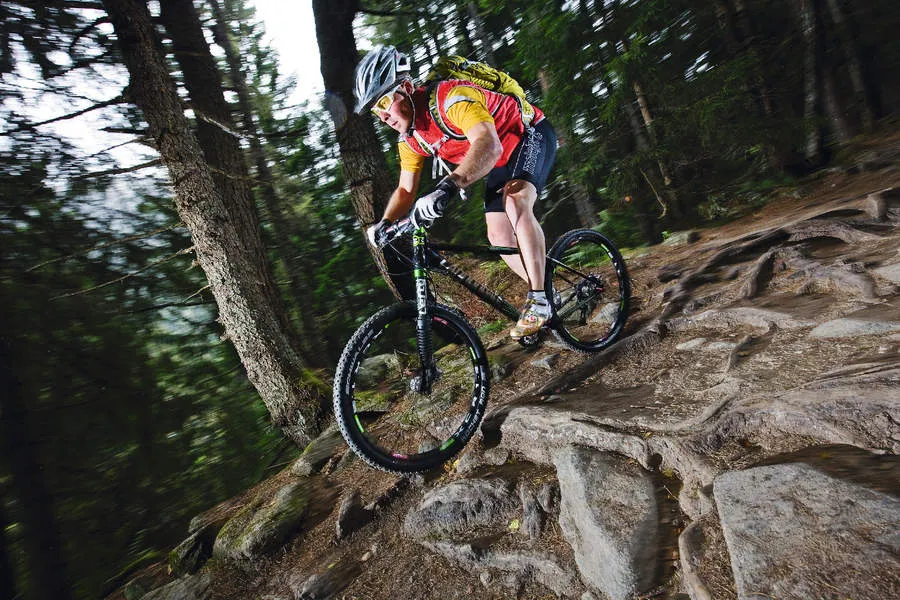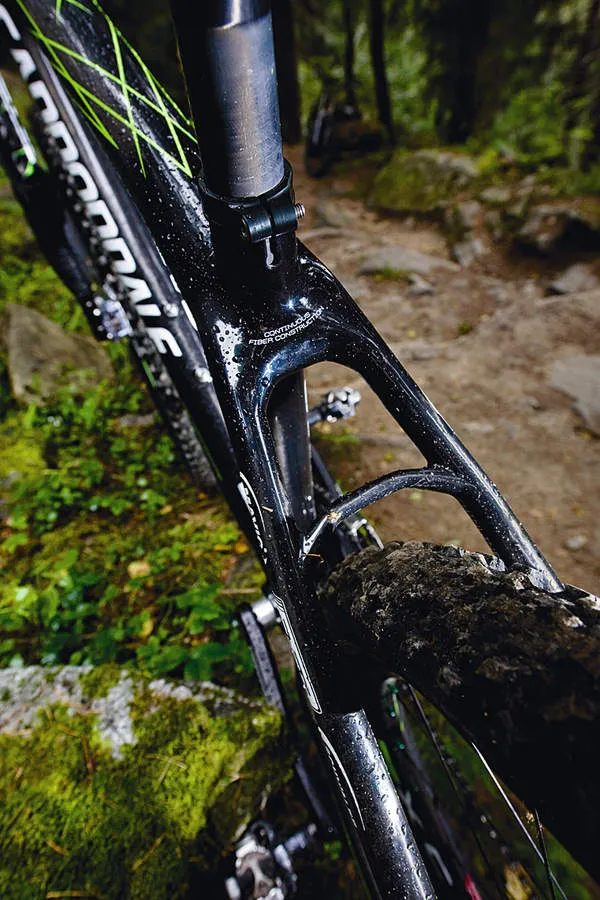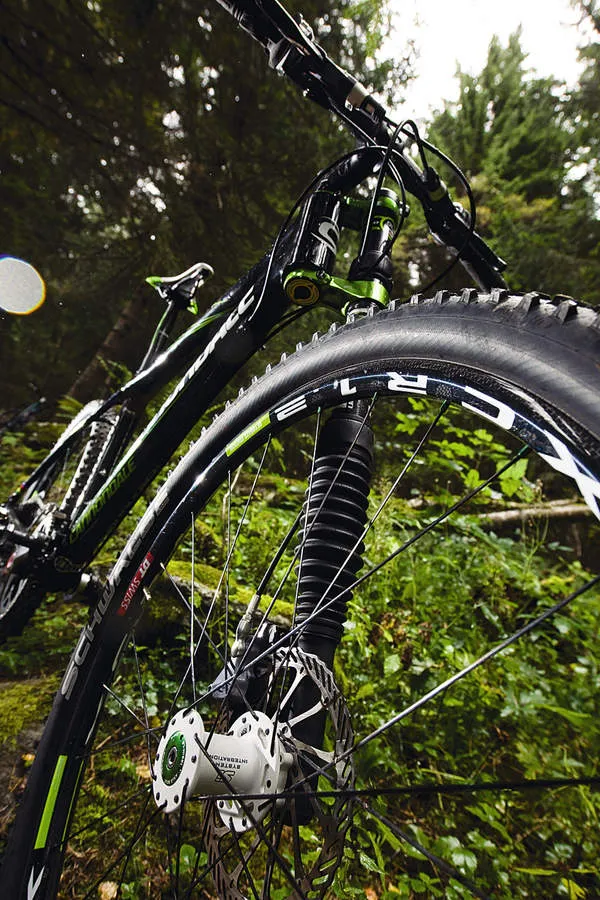We admit that we can sometimes become jaded when it comes to manufacturers’ claims of ‘best ever’ and ‘lightest ever’. We prefer to keep our powder dry, as it were, until the bike delivers on these claims in the real, often harsh and always dirty world of the trail.
So it was with the new Cannondale Flash. Cannondale’s PR proudly trumpeted the gossamer 950g frame weight and some waffle about it having an amount of rear suspension “built in”.
We’ve ridden superlight carbon hardtails before – the Scott Scale and Tomac Type X come to mind as alpha male examples – that let you gallop over smooth trails, even if your lower back and dentures pay a price. Surely the Flash would be just the same? No. It's in a league of it's own.
Ride & handling: A cross-country racer’s wet dream, and much more...
Some bikes just exude ‘smooth’. The Flash exudes smooth more than any other hardtail we’ve ever ridden – more even than some full-suspension cross-country race bikes. We revelled in the emotion of riding a bike that weighs less than most top-end road bikes, yet unlike many lightweight hardtails it’s far from being a tooth rattler.
Our Flash was fitted with fat 2.4in Schwalbe Rocket Ron tyres (Cannondale lists 2.0in), an accomplished fork that has one of the lightest top-end responses on the market and a geometry that seems to sense grip and then guides you to it.
While all this good stuff is going on, another part of your brain is handling the signals from your pelvis, which is moving backwards in relation to the bottom bracket – and far from being a problem or distraction, the effect is soothing.
Soothing in that you’re able to allow a degree of relaxation in your lower back, where normally hardtails make you tense up in preparation for sharp, unexpected bumps. The Flash can dial that out.
There’s a hill on one of our local loops, a rutted one-line rock-strewn test that usually favours a soft-sprung trail bike. The Flash managed to beat all previous records on the hill and would have easily made it to the top had the tester not stopped out of pure disbelief at what he’d achieved – a first run on an unknown bike, and a race hardtail at that.

The Flash lays down its power without bobbing or slipping, simply hooking and clawing its way upwards. Point the thing downhill and it’s a similar story. There’s a poise and deep-seated understanding of what you’re trying to achieve coming from the bike as you fly downhill.
You have to be a bit careful because the light weight can lead to it getting ‘bounced’ if you get crucial timing and line choice wrong. That said, this bike can ride where other hardtails can’t: it allowed our bad back-stricken rider to shred with hardtail purity where normally it’s full-suss or no ride at all.
If you’re a racer with deep pockets who seriously loves riding hardtails fast you should buy a Flash, no question. For trail hounds the performance benefits will still make a difference, as it’s a bike that’s generous in sharing its assets.
Only the value of such a bank balance-busting bike is in question. After all, you could buy not one but two top-of-the-range XTR/X.0-equipped 2010 Merida 0.Nine Team D hardtails – the only other frame with rear end flex close to the level on the Flash.
You could opt for full-suspension, like an S-Works Epic, and ride around with £2,000 cash in your hydration pack. Or, if you still want the Flash but simply can’t do the dough, then the alloy framed versions are more reasonably priced and deliver ostensibly the same ride feel.
Frame: Classic 'Dale geometry with Tour de France-inspired touches
The Flash uses Cannondale’s well-proven basic geometry. It’s long, but not uncomfortably so, and like all ‘Dale frames it has a relatively high bar position in relation to the saddle – not something racers normally like, but great for us less flexible mortals. The flavour is undoubtedly racy, but with a shape that promotes long hours in the saddle. It’s an easy shape to like.
The front end is also classic Cannondale, with big tubes melding into the ubiquitous, and sublimely brilliant, mono blade 110mm-travel Lefty air-sprung fork. Everything looks pretty normal back to the seat tube, but there it all goes a bit Tour De France.
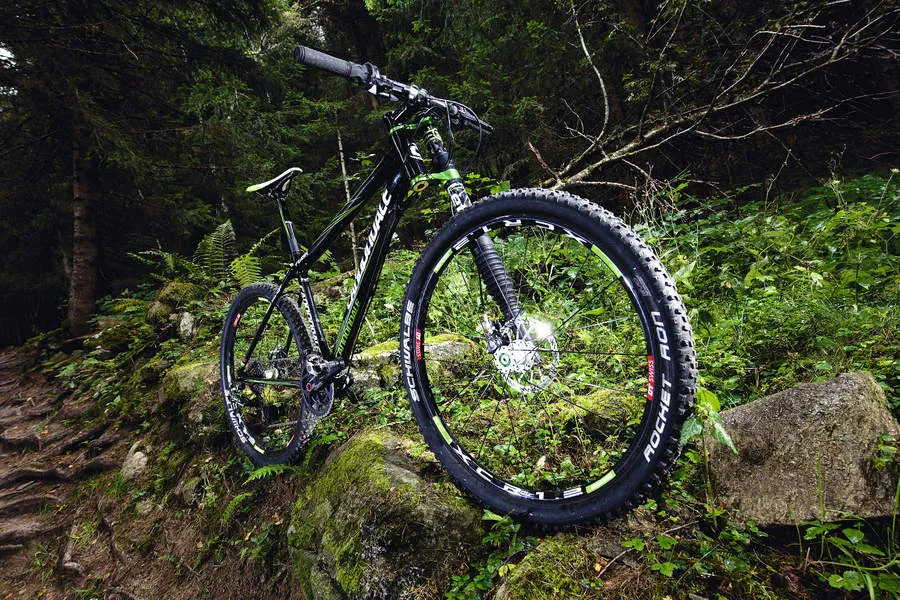
Ripped from Cannondale's Super Six road bike, the seatstays are possibly the thinnest on any production mountain bike. They’re not just pencil thin – they, like every tube on the bike, have been boiled down to a minimum to deliver a specific ride character.
In the case of the Flash’s seatstays, this is for vibration damping and a degree of vertical compliance. The chainstays also follow suit, though not to quite such an extreme degree.
There is one tube in the Flash frame, though, that we simply cannot overlook: the seatpost. This 27.2mm diameter carbon post has been designed to flex towards the rear with a maximum throw of up to 40mm (depending on rider weight).
The fibre is laid up in such a way that it flexes only in that direction, and in all other directions is as stiff as any other carbon post. It’s a critical part of why the Flash is such a great ride.
Cannondale have one of the largest privately owned research and development facilities in the bike industry, and they plan and develop their products years ahead of the stuff we’re riding now. Cannondale’s performance and technological stance is the vision of Peter Denk – and he understands how to tune high-modulus carbon better than any other bicycle engineer in the world.
He knew he could nail the magical 950g frame weight, but he also wanted to do something even more impressive: make a hardtail frame that felt and climbed with the grip and poise of a short travel full-suspension bike.
And let’s not mince words: the frame is a work of art. Run a finger along any of its tubes and you’ll see and feel a level of ‘outside the box’ thinking that lets you know this bike is the product of a special brain.
